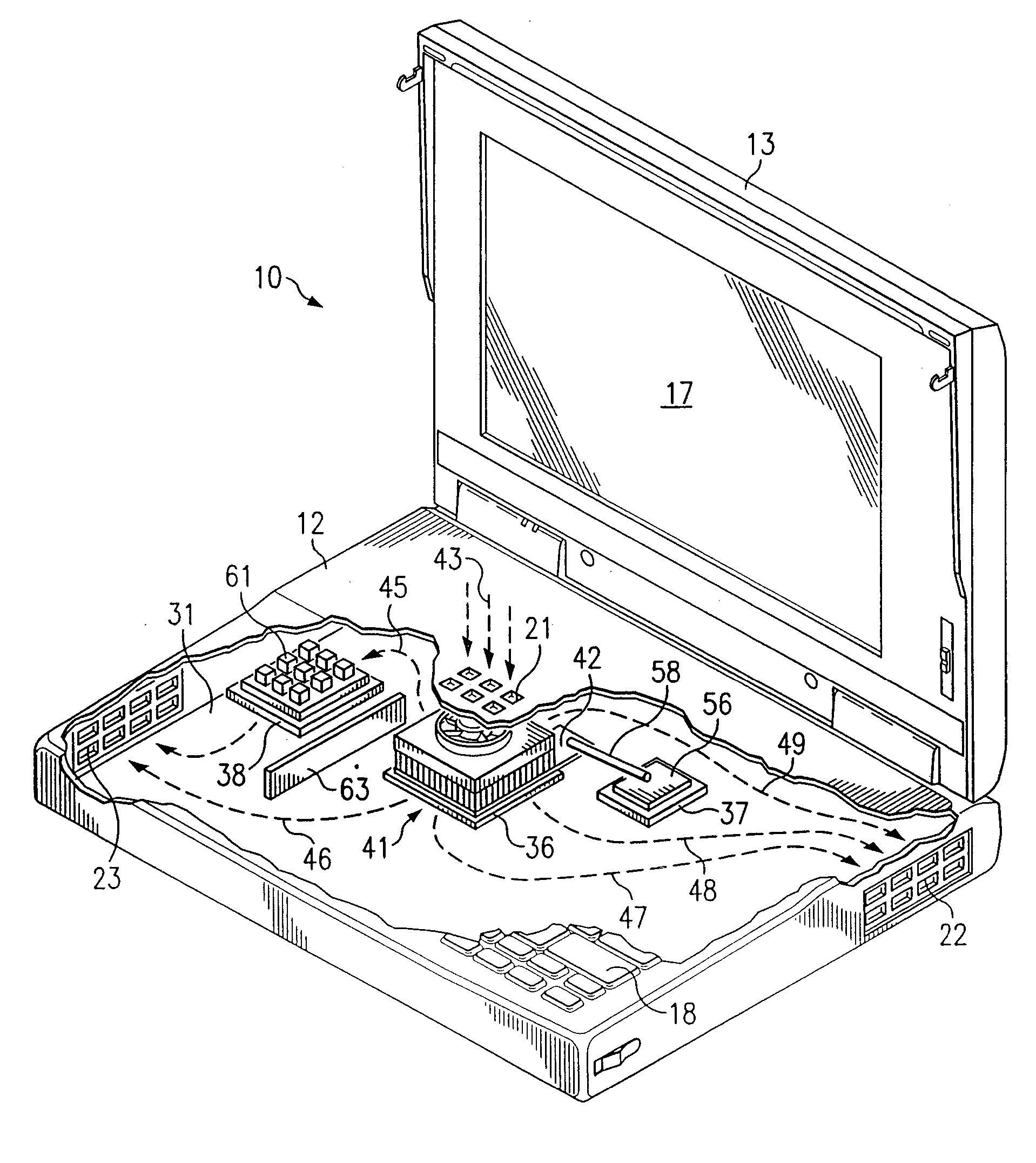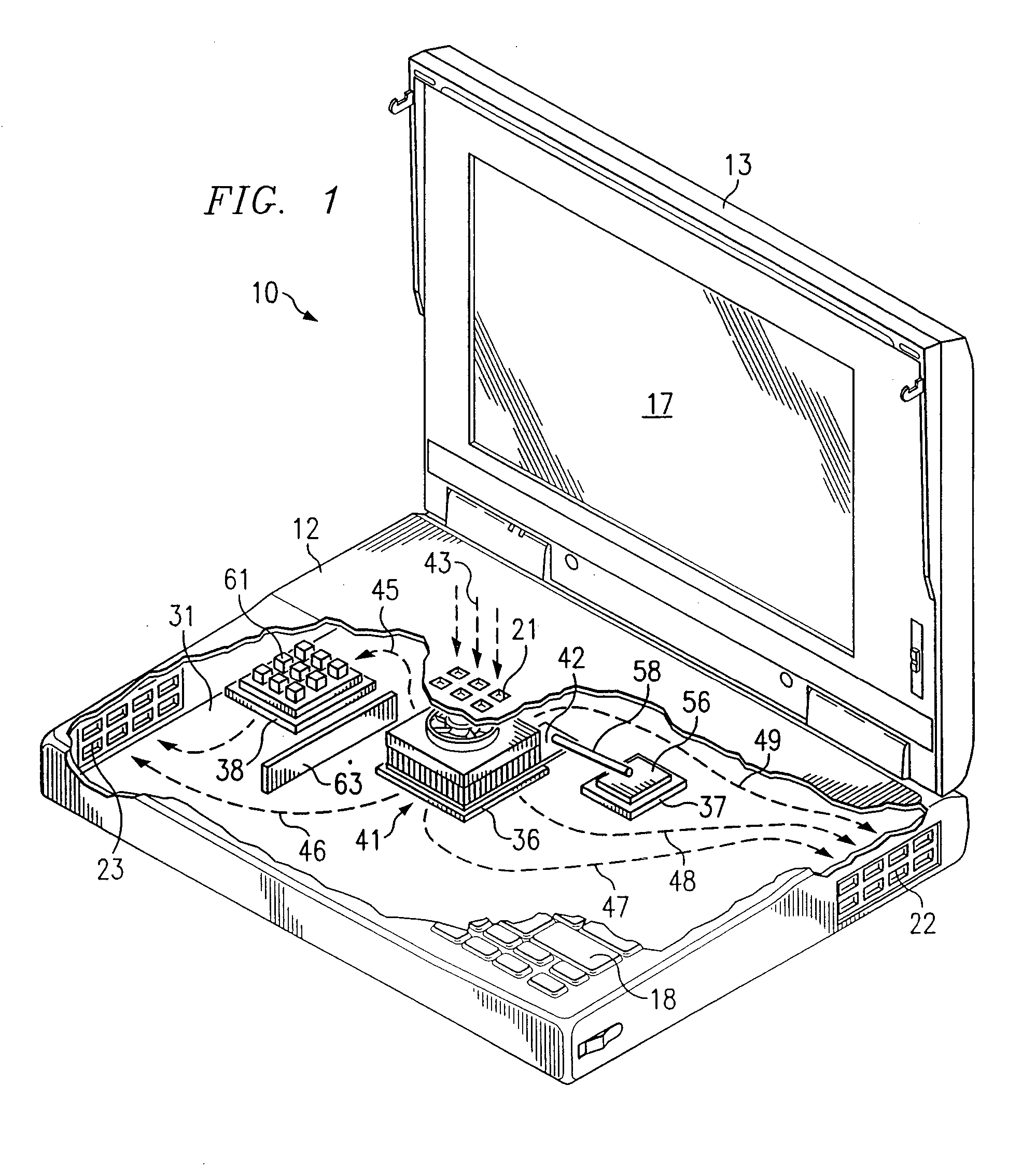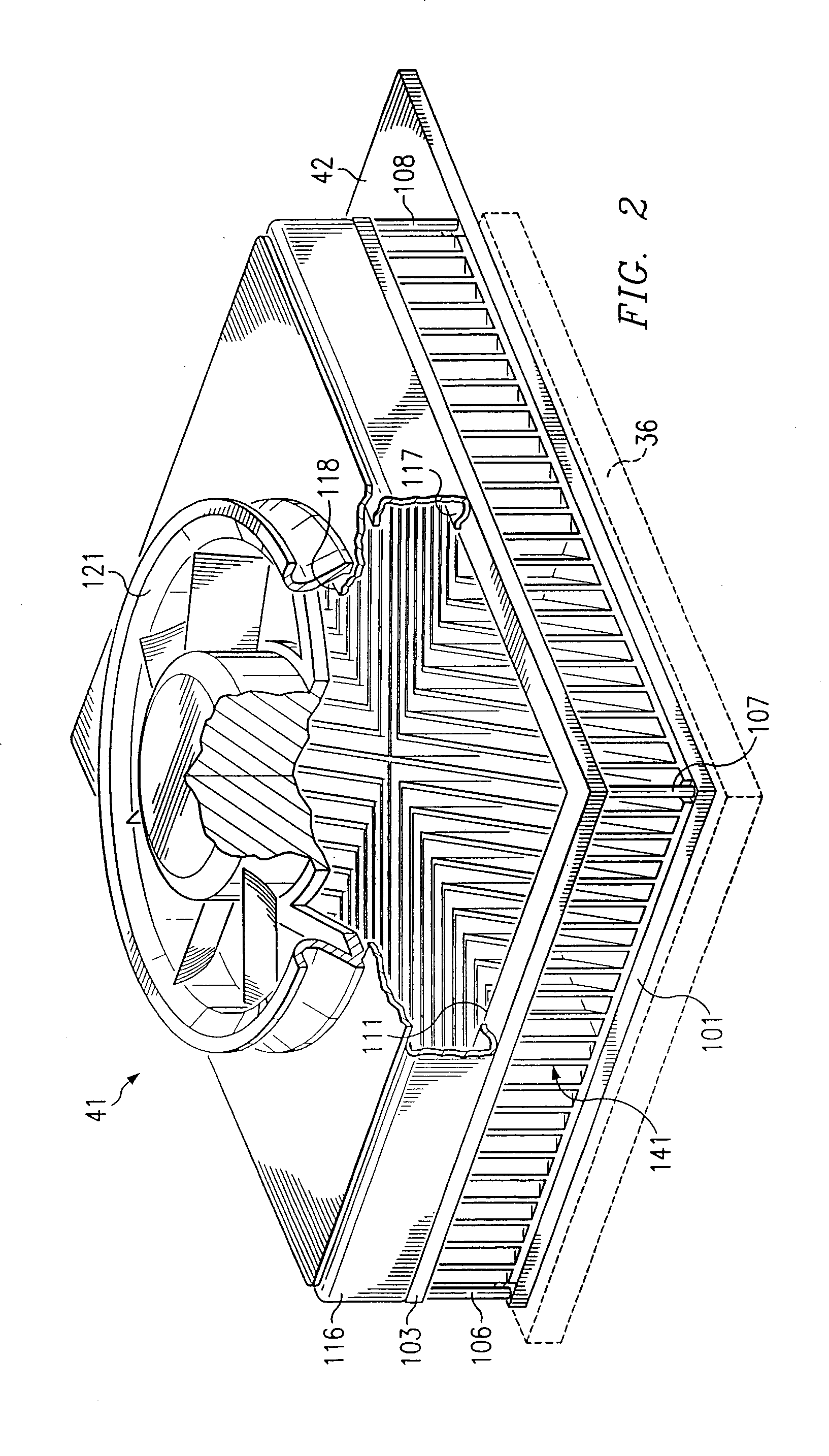Method and apparatus for cooling a portable computer
a portable computer and circuit device technology, applied in the direction of electrical apparatus casings/cabinets/drawers, instruments, semiconductor/solid-state device details, etc., can solve the problems of reducing the capability of the system, the value of the system in the eyes of consumers, and the inability to meet the requirements of portable computers. to achieve the effect of convenient cooling
- Summary
- Abstract
- Description
- Claims
- Application Information
AI Technical Summary
Benefits of technology
Problems solved by technology
Method used
Image
Examples
Embodiment Construction
[0017]FIG. 1 is a diagrammatic fragmentary perspective view of an apparatus which is a portable computer 10, and which embodies aspects of the present invention. The computer 10 includes a housing 12 and a lid 13. The lid 13 is pivotally supported on the housing 12 for movement between an open position which is shown in FIG. 1, and a closed position in which the lid is adjacent the top surface of the housing 12. The lid 13 contains a liquid crystal display (LCD) panel 17 of a type commonly used in portable computers.
[0018] A plurality of manually operable keys 18 are provided on top of the housing 12, and collectively define a computer keyboard. In the disclosed embodiment, the keyboard conforms to an industry-standard configuration, but it could alternatively have some other configuration. The top wall of the housing 12 has, in a central portion thereof, a cluster of openings 21 which each extend through the top wall. The openings 21 collectively serve as an intake port. The housi...
PUM
 Login to View More
Login to View More Abstract
Description
Claims
Application Information
 Login to View More
Login to View More - R&D
- Intellectual Property
- Life Sciences
- Materials
- Tech Scout
- Unparalleled Data Quality
- Higher Quality Content
- 60% Fewer Hallucinations
Browse by: Latest US Patents, China's latest patents, Technical Efficacy Thesaurus, Application Domain, Technology Topic, Popular Technical Reports.
© 2025 PatSnap. All rights reserved.Legal|Privacy policy|Modern Slavery Act Transparency Statement|Sitemap|About US| Contact US: help@patsnap.com



